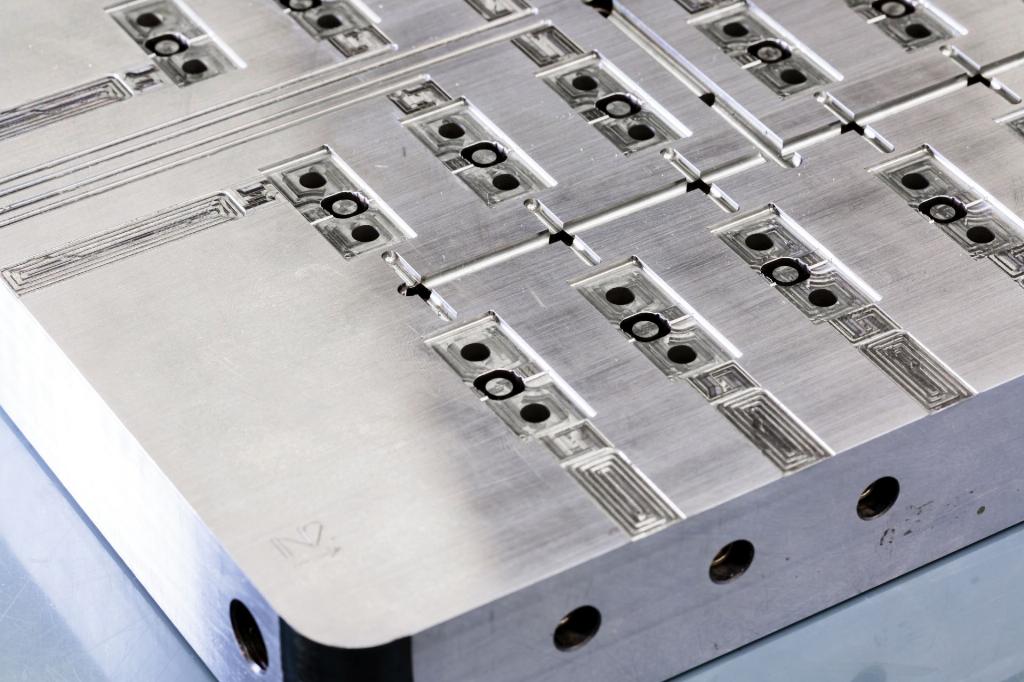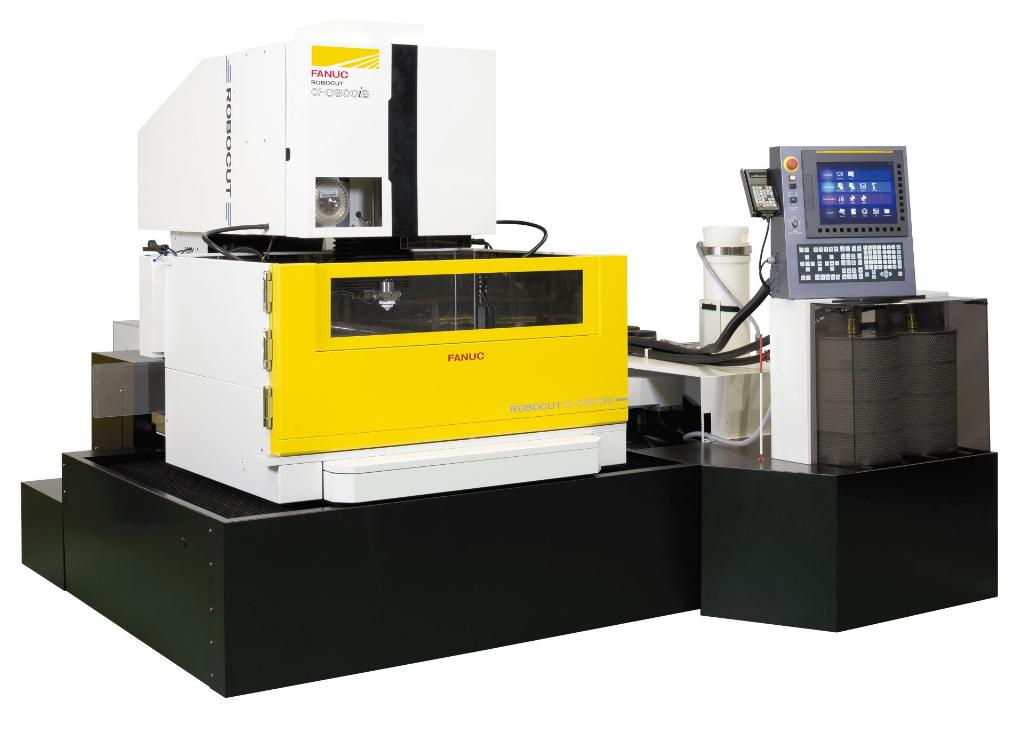The art of wire erosion

As the demand for leaner and more efficient production processes increase, so too does the requirement for more complex, automatable machines. PES finds out why Fanuc believes its wire EDM machines are ready to meet the challenge.
UK manufacturing industry is under more pressure than ever to meet demanding sales targets, streamline operations and increase productivity to compete in the global marketplace. To do this successfully, manufacturers need to be sure their machines and tools are up to the task.
While traditional machining methods such as milling, turning and grinding remain popular for certain processes, wire EDM has also carved a niche in its own right.
Initially used in the 1960s as a means of making tools from hardened steel, wire EDM has since developed into a highly reliable and accurate process for the manufacture of complex and durable components.
Andrew Spence, Robocut product manager at Fanuc UK, says: “The principle of wire EDM is a spark that is generated between the workpiece and the electrode, similar to the spark that you see in films when a character hotwires a car. With EDM, you control this spark, which melts the material and creates the shape you need.
“Wire EDM involves a thin piece of wire, which is pulled between two guides to act like a high-precision bandsaw. Pre-determined CNC drive systems guide the wire into making complex shapes.”
The CNC aspect of the machine allows manufacturers to specify the shape and boundaries of the cut with minute precision. As Mr Spence explains, this helps them to produce the same result every time.
“EDM is accurate down to ±3µm on tolerance and ±1.5µm on positioning,” he says. “You can only achieve that with milling if the shape is relatively simple. With an EDM process, once you’ve proven the first one, the repeatability is the same thereafter.”
Wide applications
The accuracy of wire EDM, guided by the CNC drive systems, has led to the introduction of such machines across a variety of sectors.
Mr Spence continues: “EDM has been a very big part of the manufacturing process for toolmakers, but you can now also see wire EDM in motorsport, aerospace, university R&D and general engineering. Medical is also a major sector for wire EDM, where it is used to manufacture medical devices such as stents or implants. This is because EDM doesn’t use a cutting force like traditional machines, so you can cut very thin and accurate components.
“Wire EDM can also cut a different form for the top and bottom of a piece of material, which allows you to create extrusion dies for door seals on cars for example.”
The versatility of wire EDM also extends to its ability to cut thick and hard materials as Mr Spence affirms: “You could, for example, shape a piece of hardened D2, 60 Rockwell, Inconel, tungsten carbide or titanium,” he says. “A wire EDM can even cut polycrystalline diamond, a manmade material on a carbide backing. The only proviso is that the material must be conductive, so plastics and other non-conductive materials are not suitable for EDM manufacture. Modern machines are also capable of cutting materials of up to and over 500mm.

“However, there is a downside to the EDM’s manufacturing capabilities; it’s not a fast process – if you’re cutting a material that is 500mm thick, the machine will only be able to work at about 0.1mm a minute.
“Having said that, it only takes one pass with the machine to create the object you want, as opposed to traditional machining methods where it might take three or four. Furthermore, if you want to create the same shape several times, you can put three, four or even ten pieces of material on top of one another and make identical copies of the component at the same time.”
Unmanned advantages
With the rise of Industry 4.0, the most important consideration for manufacturers is the role that automation can play in streamlining their processes. Wire EDM machines that are powered by pre-determined automated commands can offer a significant cost saving to industry because operators do not have to man machines the entire time.
Mr Spence says: “A Fanuc wire EDM, for example, requires less than 10% of operator intervention to run a full program. That 10% will be the initial contact to program the machine and set the component. After that, the machine can be left to run all the way through a program without interference. It can even recover and repair itself if the wire breaks.
“A Fanuc machine runs at approximately £5 an hour,” he continues. “This covers wire, filters, electrodes and resins. The machines are also built to be as eco-friendly as possible, so energy costs are kept to a minimum.
“With wire EDM, it’s unlikely that you’re going to need a full service more than once a year because you’re not dealing with the force and impact of traditional, heavy-duty machines, so preventative maintenance is key. Fanuc offers a tailored maintenance service to suit each business, but we also do a minor/major service between which can be alternated.
“Having said this, modern EDM machines are built to last. There are now machines that are 30 years old and still going strong and more modern machines could last even longer. Compare this with the ten-year life expectancy of a typical machine tool, and you can see how much of a saving you could achieve. Importantly, Fanuc will always supply its customers with the part they need, so an EDM machine really does last for life.”
Easy learning
When it comes to implementing automated machining processes such as wire EDM, many manufacturers are concerned that they do not have the skills in-house to handle this successfully.

“Many think EDM is a bit of a black art, “Mr Spence says, “but I’ve worked with people who became proficient in a week, despite having little to no CNC experience. The key is to work with the machine as much as you can and build your experience – you don’t even need to know any coding because this can be produced automatically.
“The user-friendly nature of the machines means that even someone with no knowledge of CNC can operate the machine to a basic level in a week.”
For manufacturers that are already implementing wire EDM into their processes, the advantages are clear: a complex, precise cut with low running costs and minimal requirements for human intervention. Furthermore, the versatility of these machines means that they can be implemented for a range of uses, from the smallest medical devices to the building blocks of an aeroplane.
Mr Spence concludes: “By controlling the spark, you’ve got a highly repeatable and precise manufacturing process that will keep you achieving quality output for the next 40 years and beyond.”
Andrew Spence has worked with Fanuc Robocut wire EDM machines for over 26 years.
FANUC www.fanuc.eu/uk/en/robocut














